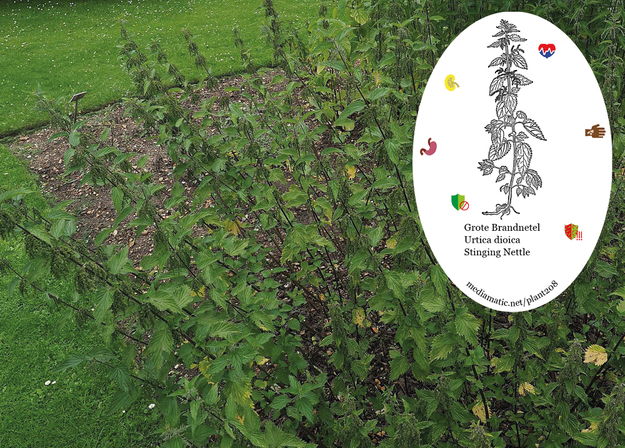Young leaves - cooked as a potherb and added to soups etc. They can also be dried for winter use. Nettles are a very valuable addition to the diet, they are a very nutritious food that is easily digested and is high in minerals (especially iron) and vitamins (especially A and C). Only use young leaves (see the notes above on toxicity) and wear stout gloves when harvesting them to prevent being stung. Cooking the leaves, or thoroughly drying them, neutralizes the sting, rendering the leaf safe to eat. The young shoots, harvested in the spring when 15 - 20cm long complete with the underground stem are very nice. Old leaves can be laxative. The plants are harvested commercially for extraction of the chlorophyll, which is used as a green colouring agent (E140) in foods and medicines. A tea is made from the dried leaves, it is warming on a winters day. A bland flavour, it can be added as a tonic to China tea. The juice of the leaves, or a decoction of the herb, can be used as a rennet substitute in curdling plant milks. Nettle beer is brewed from the young shoots. Source: https://pfaf.org/
Stinging nettle
Urtica dioica
Find more about this plant on Wikipedia.
